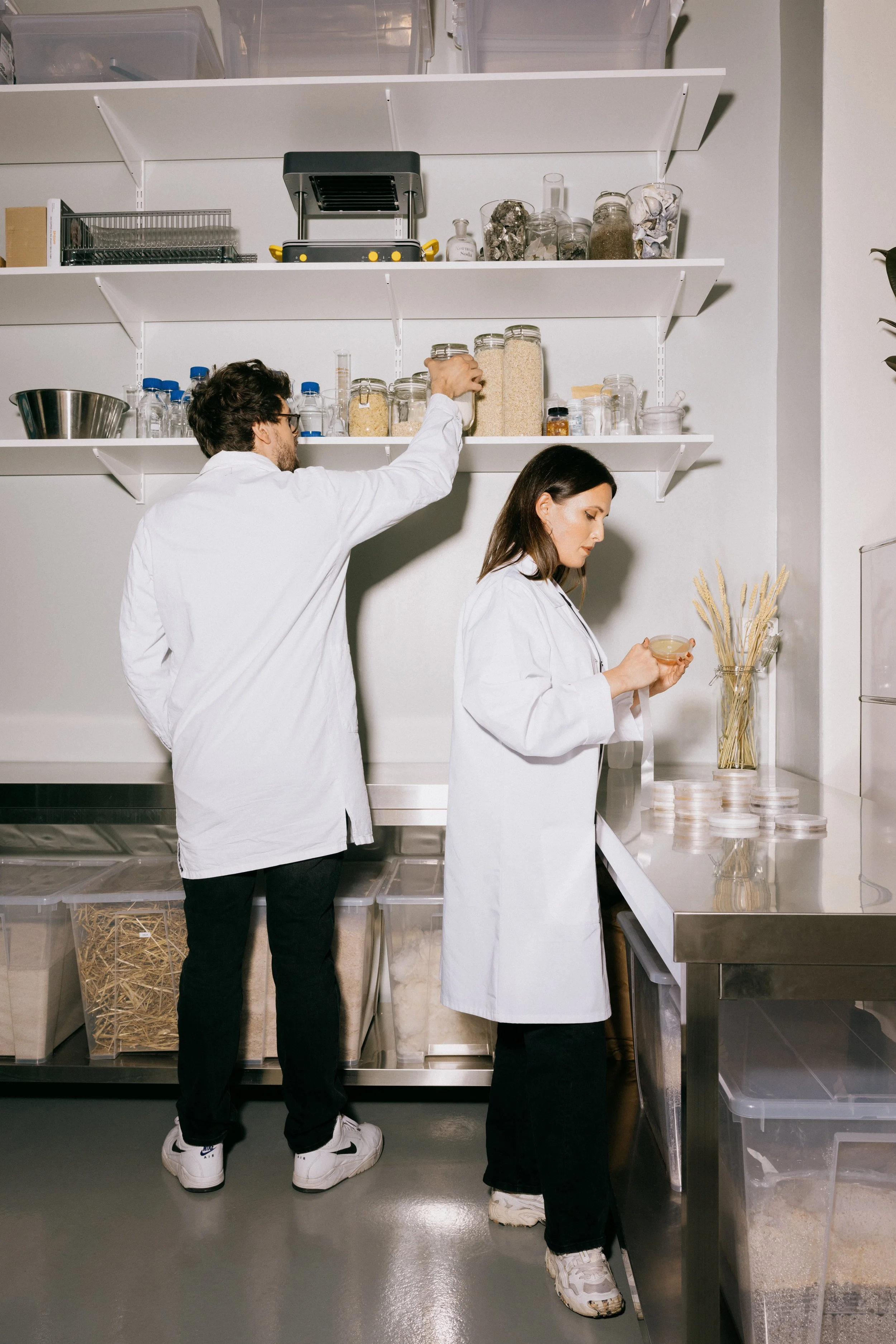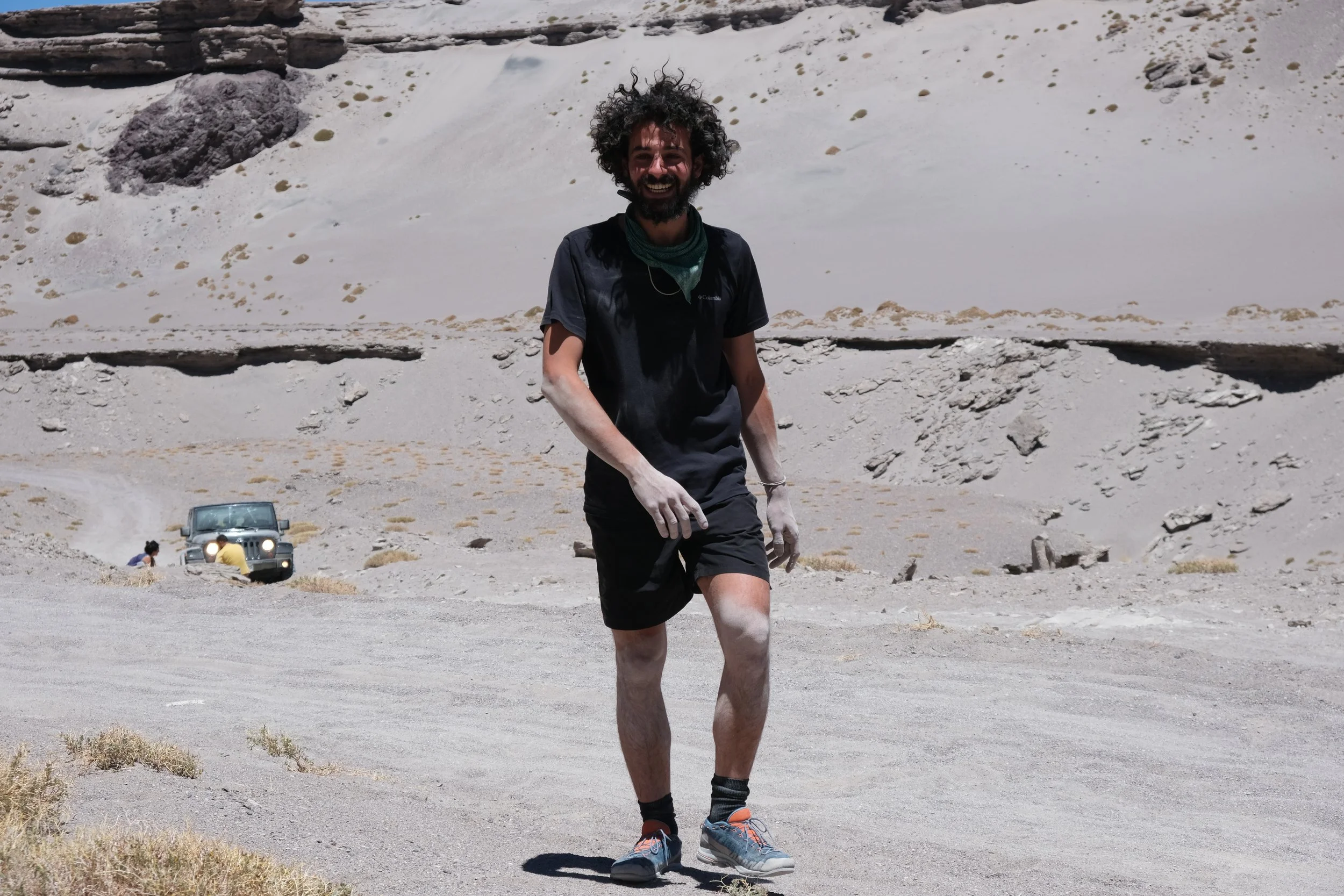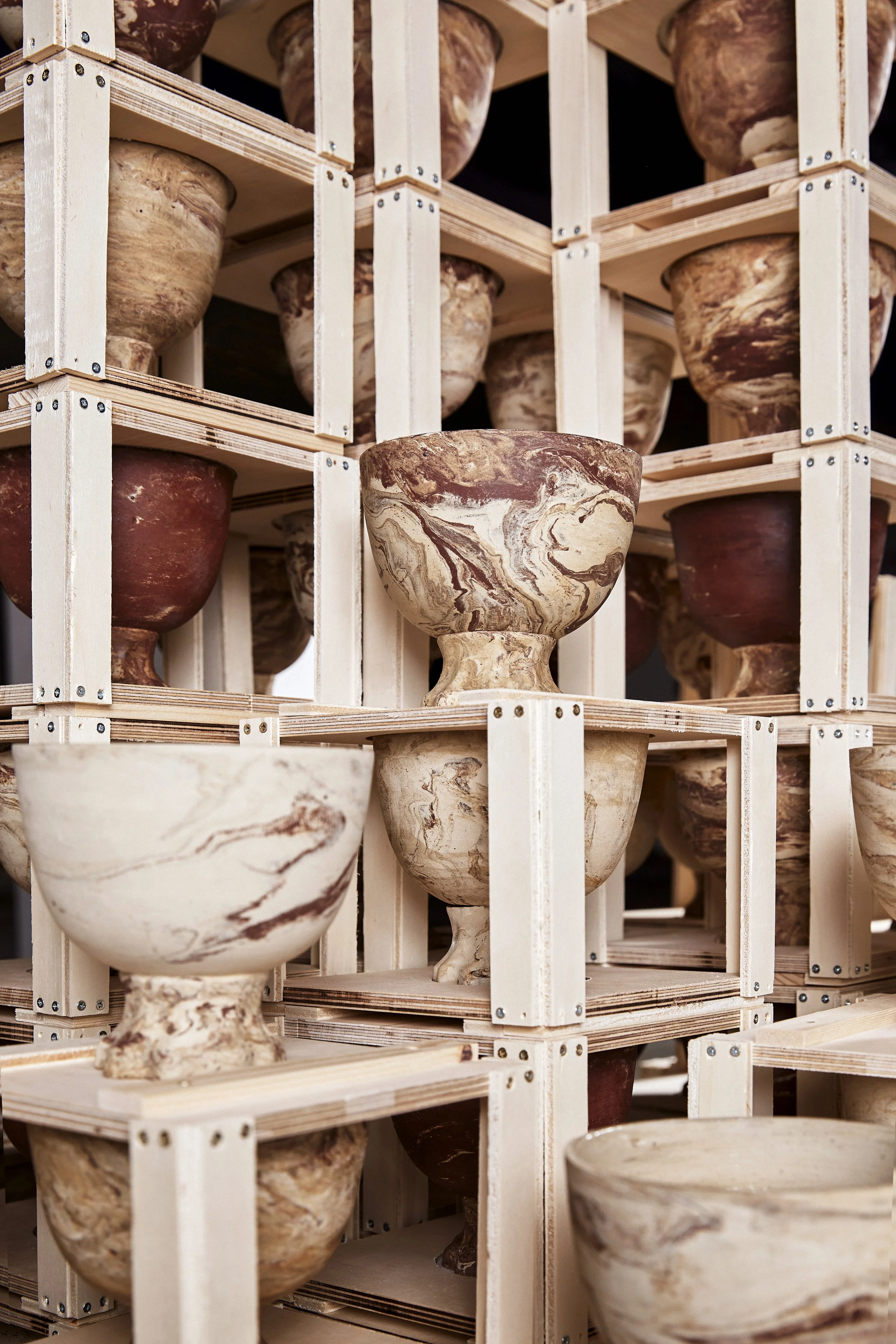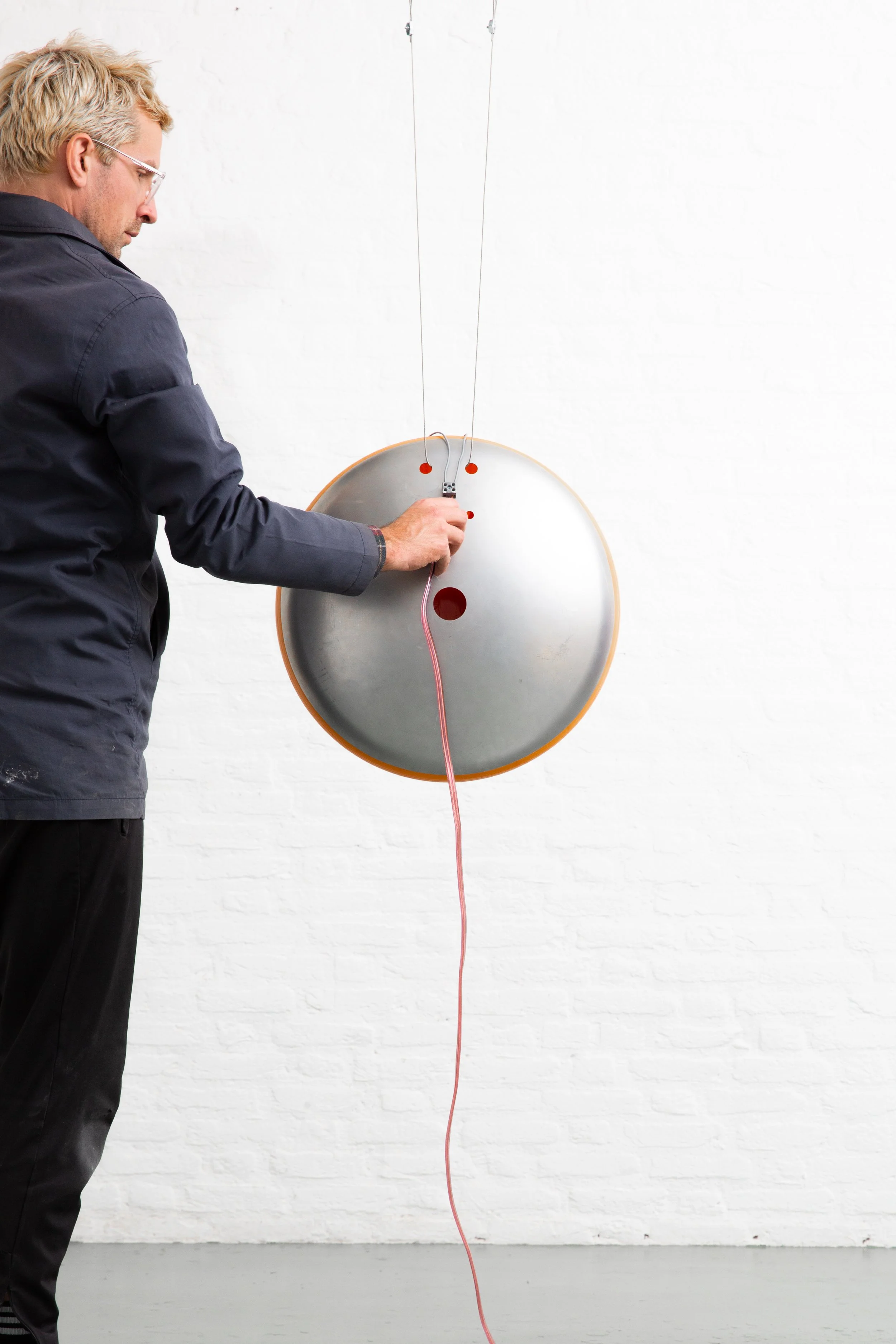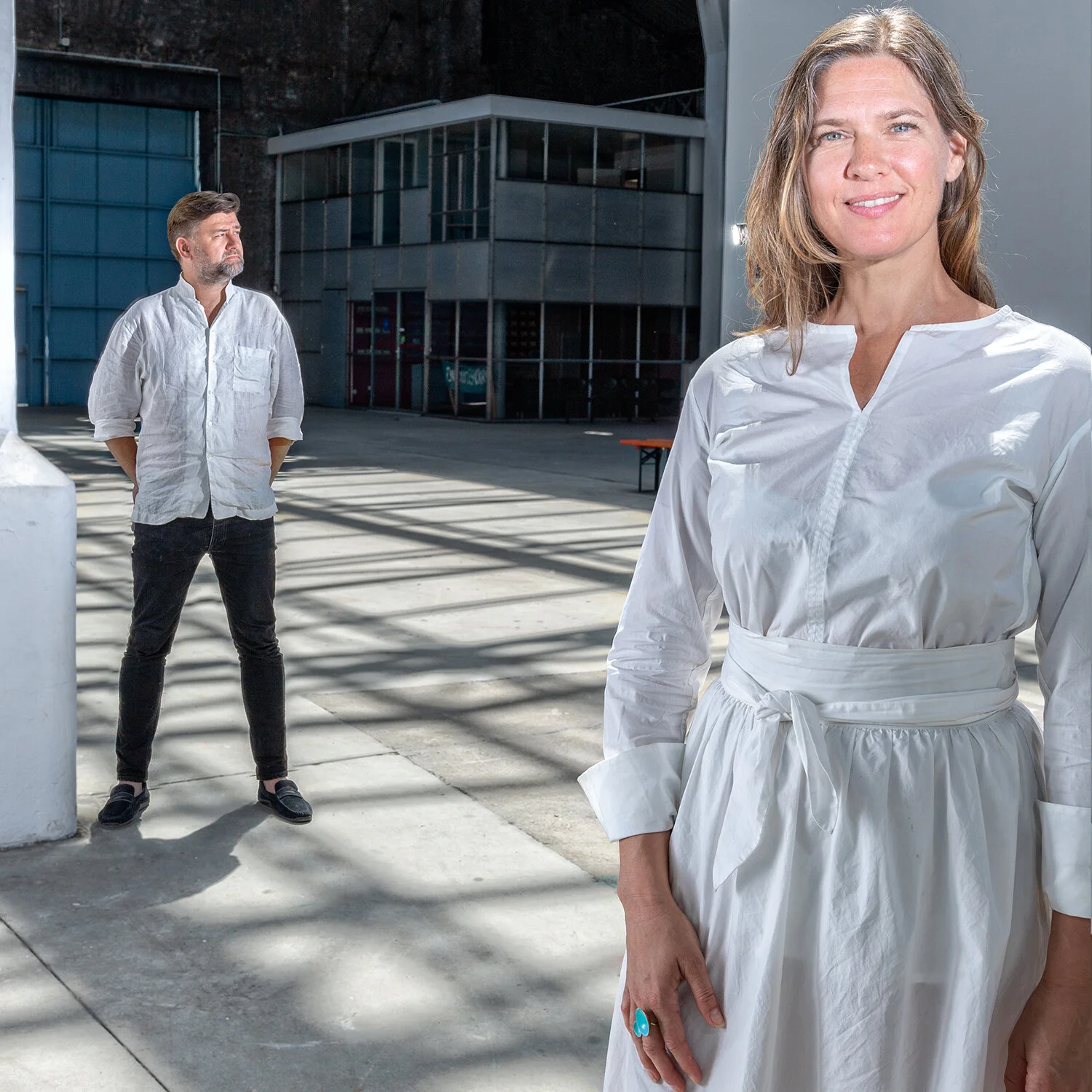Making inclusive cities with Eriksen Skajaa
Eriksen Skajaa is a small Oslo based architecture studio founded by Joakim Skajaa and Arild Eriksen. By focusing on people in their work they have been able to create human friendly city development and living environments in both larger and smaller scale. We headed down to their beautiful office in Oslo to have a talk with Joakim and Arild about their approach to architecture.
#If Eriksen Skajaa was an animal, which animal would you be and why?
A: Ants. Maybe it’s the not right animal but I feel we have a very social approach to our work and ants are a really social animal. When we work we always have some really clear goals that we work towards, It’s like we are trying to make this huge anthill and we are using materials from all kinds of different places.
Eriksen Skajaa workspace - Photo Eriksen Skajaa
#What kind of weather would describe your work situation right now and why?
A: I was really happy when I woke up this morning because it had been raining and the grass was starting to get green, so maybe it’s a rainy spring morning.
Pollen Magazine cover - Illustration Grandpeople
#In the latest issue of your magazine “Pollen”, you have been visiting projects in Berlin, Hamburg and London. What is inspiring in especially these cities, and what can a city like Oslo learn from them?
J: In Oslo the housing development is very monocultural, it seems like there’s only one way to do things, but if you look at Berlin or Hamburg there’s a different range of how to do things from high end development to social housing. There’s just much more diversity. Oslo can really learn from that.
#A lot of people spend the most of their day at offices at the moment. What is the future of work and the working environment?
J: In Eriksen Skajaa we spend a lot of time out of the office so sometimes I actually long to spend more time in the office.
A: It would be interesting to see some new models of co-working spaces, not focusing on efficiency but creating structures for better cooperation. I think the future of offices will be more homely places where the office functionalities is something that you share with others like co-housing where you own less but share more. For instance if we had a model workshop down the road shared with other studios or three smaller meeting rooms so it almost would be a small office village. That would be really interesting and could spark interesting collaboration between different people.
#Real estate prices have been accelerating in Oslo for the past years, how does that affect the city and your work as architects?
J: One of the main problems with the rising of house prices is that a lot of people are being pushed out of the city. Not as bad as in other places but still it’s becoming a bigger and bigger problem here in Oslo, so for us as architects we have to look at solutions that are more inclusive so the city doesn’t become even more segregated.
The problem with social housing has been that the people living there tends to have a lot of problems and generally come from the lower end of society but with this new interest in social housing we now get the opportunity to create new models of social housing with emphasize on creating a good mix of people.
A: What is really interesting is that a lot of the people at the city council is now being more interested in developing new models of housing. What has happened to us is that we started with Pollen 1 and 2 looking at alternative ways of housing and suddenly we have been gaining a lot of experience and knowledge about a lot of models from rest of europe and now we have a situation where Oslo is interested in doing some more alternative solutions so for us as architects I will say that it’s a nice situation in the way that it’s opening up new opportunities in the city.
Model of Hauskvartalet - Foto Eriksen Skajaa
#In the latest issue of your magazine “Pollen” you explore the possibilities of a D.I.Y approach to housing development. What are your 3 advice for people who wants to make a mark on their city?
A: When we have been working with projects where people are trying to do the housing development themselves some of the most common things are that they have difficulties figuring out how to get financed and how to organize themselves.
J: I would say that the key is to make a strong organization. It is also very important to establish a political context, to reach out to the right people. And the last advice would be to have clear objectives or what you want to achieve and not want to reinvent everything but be clear on one goal.
#Do you see the social approach to architecture as a niche, or as something that will enter the mainstream work of today's architect?
J: It will definitely enter the mainstream work.
A: I think it has been very special here in Norway. In a very short amount of time we have come a long way. In other countries you see big offices working with this social approach, but in Norway it’s like we haven’t been looking at it that much because it hasn’t been interesting for the developers or the real estate agents. It has been a niche but we are on our way out of it but there will always be a niche that wants to push the boundaries further.
Ormsundveien økogrend. - Illustration Eriksen Skajaa
Check out Eriksen Skajaa's projects here: www.eriksenskajaa.no
Elementa Conversations:







